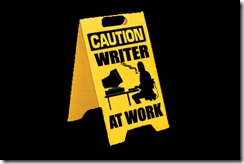No matter what you write, these little gifts of writer’s resources will speak to the heart and soul of your writing life, with unique, fresh insight (and some rappin’ too).
Career Survival
From award-winning novelist Jenny Cruisie:
Rats with Islands: How To Survive Your Publishing Career
Excerpt: “My plan was to make this column about the realities of publishing, giving you all a head’s up on what you’re about to face. Then I realized that was a remarkably bad idea.
“Here’s the thing about reality: It’s not good for you.”
Powerful Technique
From Mary Jaksch at Write to Done:
Why Disconnectors Are Critical In Keeping Your Readers Awake A guest post by Sean DSouza of Psychotactics
Excerpt: “Disconnectors create a jolt
“Imagine you’re driving a car. And the highway stretches in front of you straight as an arrow. Mile after mile of the same, same seems to suck you into vortex of yawns.
“Then suddenly you you see a curve in the road.
”The curve is the disconnector“It’s the thingamajig on the journey that jolts you back to life. You’re all alert. You’re all eyes and ears. And you’re paying close attention.”
Insanity vs. Humor
from LifeHacker:
How to Work from Home Without Going Insane
Excerpt: “When you work at a location of your choice you can control what distracts you. If you want to work for 4 hours and not use the bathroom you can do it; if you want to work with 2 lbs of nachos taped to your face like a beard while wearing a sombrero filled with nacho cheese for snacking you can do this. Most people think they will be far more productive due to being able to control large blocks of time, but I found that the experience was quite jarring.”
Making the Professional Leap
From Junhax
The 10 Blogs That Taught Me (Almost) Everything I Know (And Why You Should Be Reading Them)
“I have never let my schooling interfere with my education.” ? Mark Twain
Excerpt: “Truer words have never been spoken.
“I was a failing student before I started my blog; I went to community college just because my parents told me to — yeah, I know, I was one of those guys.
“But when I started my blog, I had a sudden epiphany: I started to read many books (and as weird as it sounds, I used to never crack open a book), I read many blogs, took advantage of newsletters and Google Reader (RSS), and put what I read into action.
“My life from last year till now is a completely different book; I established myself as a writer, I’m about to publish my first eBook, I met many new friends and networked with incredible people, and overall my attitude and mindset became positive. I learned to live frugally, to be content, to stay focused and follow my passion.
“I’m thankful for all the positivity and people that came into my life, but there’s a reason for all of this: I read all the right blogs.”
Making It Yours
Fron LatinaPen
2011 Best of Writing Articles and a Rap on Writing
—
 Diane writes two alternating columns for Freelance-Zone:Fiction-Zone: Leaps in Fiction Mastery and Marketing-Zone:Marketing-Zone: Marketing Yourself and Your Book.
Diane writes two alternating columns for Freelance-Zone:Fiction-Zone: Leaps in Fiction Mastery and Marketing-Zone:Marketing-Zone: Marketing Yourself and Your Book.




